- 11min
- 9181
- 0
For a device, innovation, or engineering project, you’ll need a dependable and rechargeable power supply. Do you know whatBattery Types you’ll require?
The charging capacity of a rechargeable battery is expressed in milliamperes (mAh) (milli amp hours). You’ll notice this number printed on the package, as well as on the battery itself. A battery’s charge determines how much electrical current it can deliver and how long it can power your gadget.
Consumers can choose from three different Battery Types . Alkaline, nickel metal hydride (NIMH), and lithium ion are the three types. Each form has advantages and disadvantages. Each one has a unique place in the history of technology.
NiMH Battery vs NiCd Battery
The NiMH rechargeable battery is a technological advancement over the long-lasting sealed NiCD battery. Instead of using metallic cadmium as a negative electrode for the basic negative electrode, absorb hydrogen. This battery type of modification enhanced the capacity of unit weight and unit volume (Calculate based on Ah, the terminology is weight ratio capacity and volume ratio capacity), there was no memory effect like NiCD batteries, and there was no cadmium, therefore there were no worries about metallic cadmium toxicity. In other ways, NiMH and NiCD batteries are very similar. During the transition from NiCD to NiMH batteries, there are essentially no differences in application characteristics and no evident design issues.
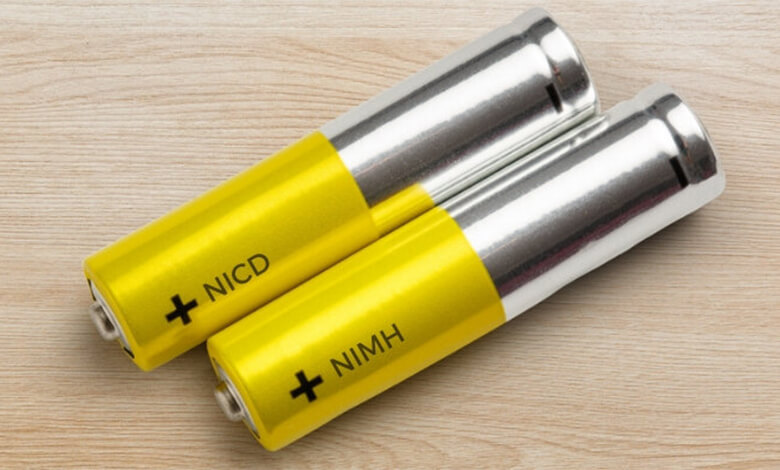
Nickel-Cadmium (NiCAD) Batteries
In 1899, a Swedish scientist invented the world’s first NiCad battery. Needless to say, a great deal has changed since then. A nickel oxide-hydroxide positive electrode plate, a cadmium negative electrode plate, a separator, and a potassium hydroxide electrolyte make up a conventional nickel-cadmium battery.
Common uses: Toys, emergency lights, medical equipment, commercial and industrial items, electric razors, two-way radios, power tools, and more devices use NiCAD batteries.
Boost Your Business with Top-Notch wholesale batteries & chargers
Benefits of This Battery Types: Some of the benefits of NiCAD batteries are summarized below:
- High number of charge/discharge cycles: if correctly maintained, the NiCd battery may give over 1000 charge/discharge cycles.
- Exceptional load performance: NiCd enables for recharging at extremely low temperatures.
- Long shelf life: at any charge level.
- Simple storage and transport: most airfreight carriers accept NiCd without any particular requirements.
- Exceptional low-temperature performance; forgiving if abused: the NiCd is one of the most durable rechargeable batteries available.
- In terms of cost per cycle, the NiCd battery is the most cost-effective option.
- Most NiCd cells are cylindrical and come in a variety of sizes and performance choices.
Drawbacks of This Battery Types: Here are a few of their flaws:
Low energy density as compared to modern systems.
- Remembering effect: the NiCd must be trained on a regular basis to avoid memory.
- Harmful to the environment: NiCd includes hazardous elements. The use of NiCd batteries is restricted in several countries.
- Has a high self-discharge rate; requires recharging after storage
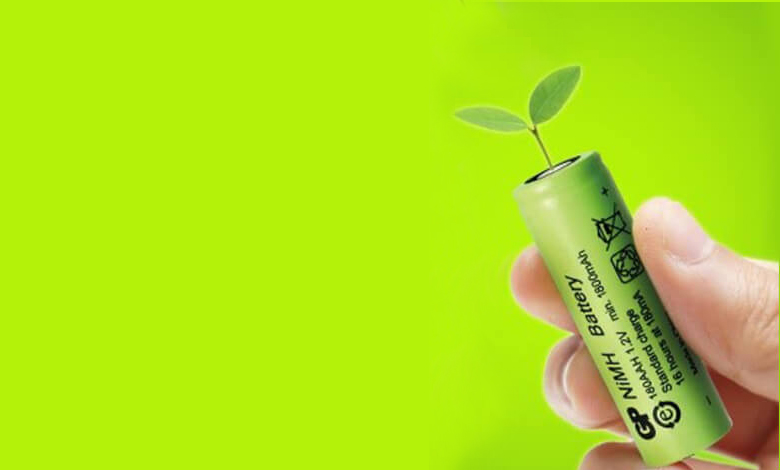
Nickel-Metal Hydride (NiMH) Batteries
NiMH batteries are relatively newer Battery Types. The Battelle-Geneva Research Center began to research and development in 1967 and finished it properly in 1987. A nickel hydroxide positive electrode plate, a hydrogen ion negative electrode plate, a separator, and an alkaline electrolyte such as potassium hydroxide make up the chemical composition of a conventional nickel-metal hydride battery.
Common uses: Automobile batteries, medical equipment, pagers, cell phones, camcorders, digital cameras, electric toothbrushes, and other low-cost consumer products are among the examples of this battery type in use.
✔ Benefits of This Battery Types: Here are just a handful of the benefits of using a NiMH battery:
- Approximately 30–40% more capacity than a conventional NiCd. NiMH offers the potential to achieve much greater energy densities.
- Unlike NiCd, it is less prone to memory. Periodic workout cycles are no longer necessary.
- Simple storage and transportation: the circumstances of transit are not regulated.
- Environmentally friendly: only minimal toxins are present; recycling is lucrative
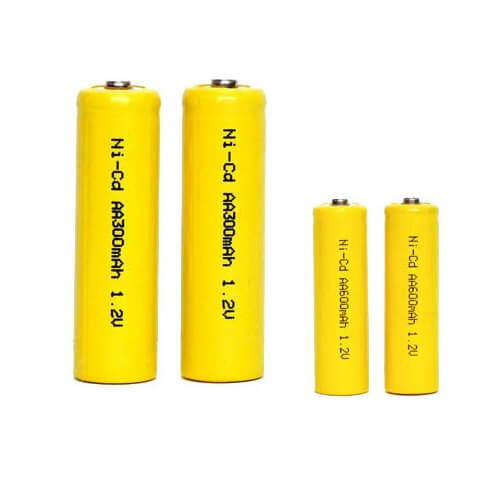
❌ Drawbacks of This Battery Types: Here are some of the drawbacks:
- Limited service life: after 200 to 300 cycles of deep cycling, especially at high load currents, the performance begins to decrease. Deep discharge cycles are favored over shallow discharge cycles.
- Low discharge current: while a NiMH battery may generate high discharge currents, frequent discharges with high load currents shorten the battery’s cycle life. Load currents of 0.2C to 0.5C produce the best performance (one-fifth to one-half of the rated capacity).
- A more sophisticated charge algorithm is required since the NiMH produces more heat during charging and takes longer to charge than the NiCd. The trickle charge is extremely important and must be properly managed.
- High self-discharge: When compared to NiCd, the NiMH has a 50 percent greater self-discharge. New chemical additions increase self-discharge but reduce energy density.
- If stored at high temperatures, performance degrades: NiMH batteries should be kept cold and charged to around 40% capacity.
- High maintenance: To avoid crystalline formation, the battery must be fully discharged on a regular basis.
- About 20% more costly than NiCd: NiMH batteries intended for high current consumption cost about 20% more than conventional NiCd batteries.
Which Battery Type Is Better
| Nick-Cadmium Batteries | NiMH Batteries |
| • They have about 1,000 charge cycles • They work with 15-20 percent discharge • They have a lower capacity of 1.2Ah – 2.2Ah • They have a fast charge time • They require proper maintenance with monthly deep discharge • They have a high memory effect if not consistently maintained | • Dependent on storage and maintenance, long cycle life • Rapid self-discharge (20-30%) • A large capacity of 2.2Ah to 3.0Ah • Quick charging time • Semi-regular maintenance with 3-monthly deep discharge • They have less memory effect than a NiCD battery when properly maintained • They are heat sensitive |
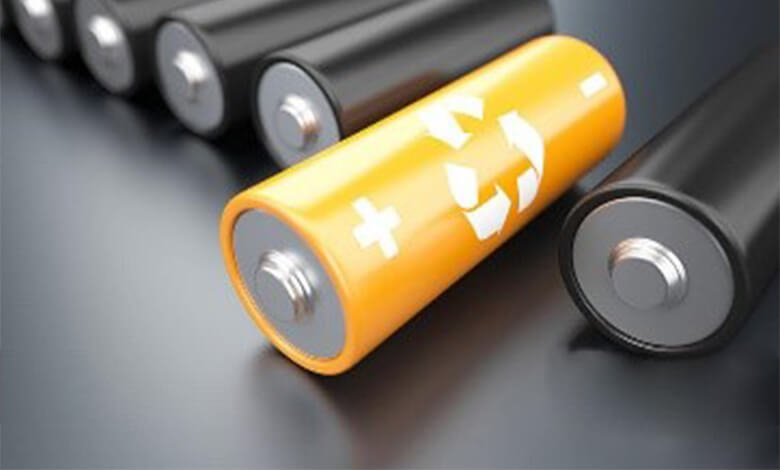
Lithium-ion Battery
Li-ion batteries are a pioneering technology that has been successfully used as a power source for a broad range of applications, including portable electronics and electric/hybrid cars.
Lithium-ion Battery in Details
A lithium-ion battery, often known as a Li-ion battery, is a rechargeable type of battery in which lithium ions travel from the negative electrode to the positive electrode via an electrolyte during discharge and then back again during charging. The positive electrode of a lithium-ion battery is made of an intercalated lithium compound, whereas the negative electrode is usually made of graphite.
Lithium and Lithium-ion Batteries, What’s the Difference of These Battery Types?
The most significant distinction between Lithium batteries and Lithium-ion batteries is that Lithium batteries are single-use and cannot be recharged after they have been used. Lithium-ion batteries, on the other hand, may be used again because they are rechargeable and can be charged and discharged hundreds of times.
📌 Lithium batteries live significantly longer while they’re resting on a shelf unused. Lithium batteries may last 10 to 12 years while still holding a charge, however lithium-ion batteries only last 2 to 3 years. You might not realize that these two types of Lithium batteries aren’t the only ones available; learn more about the differences between Lithium-ion and Lithium-polymer batteries in our post. Despite the fact that Lithium-ion batteries appear to be much superior, especially in terms of waste, there are still several qualities that make Lithium batteries quite useful. They have a far greater energy density than lithium-ion batteries, which means they can retain a lot more charge for their size.
Even if it’s the only charge they’ll ever have, lithium batteries can deliver power from a single charge. Unfortunately, there is no safe or practical way to recharge these Battery Types, which is why they were created in the first place. Lithium batteries are also less expensive to buy since they are cheaper and easier to produce.
Lithium Ion Battery Advantages and Disadvantages
The following are some of the advantages or benefits of using this type of batteries:
- It has a high energy density, two times that of Ni-Cd.
- The Lithium-Ion battery may be charged several times.
- There isn’t any sort of memory impact. As a result, there is no need to fully drain them before recharging.
- The battery can withstand several charge/discharge cycles;
- The battery can maintain a charge and lose just 5% of its charge every month.
This type of batteries have the following drawbacks:
- • It only lasts two to three years after being manufactured, and it is temperature sensitive.
- Once a battery has been entirely drained, it cannot be recharged.
- It is reasonably priced.
- If the “separator” is damaged, it might catch fire.
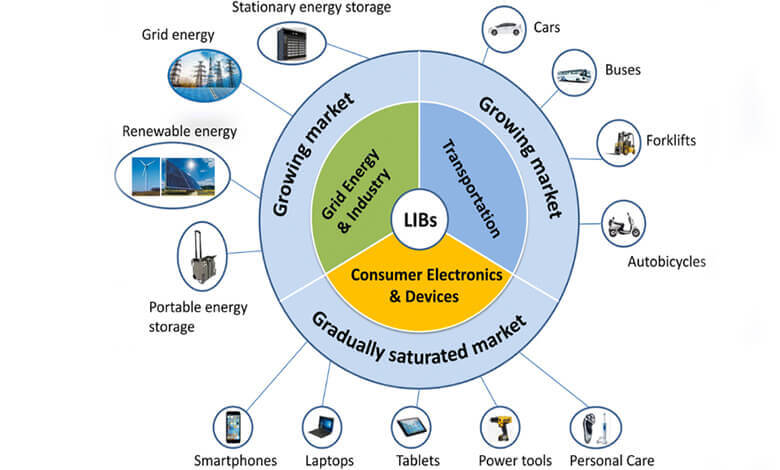
Li-ion batteries Application
Li-ion batteries are lightweight power sources with a high energy density that may be used in a range of applications. Connecting multiple tiny batteries in a parallel circuit to power bigger equipment, such as electric automobiles, is more effective and efficient than connecting a single huge battery.
- Power Tools: Cordless drills, sanders, saws, and a range of garden tools, such as whipper-snippers and hedge trimmers, all require this type of battery.
- Portable Devices: Mobile phones and smartphones, computers and tablets, digital cameras and camcorders, e-cigarettes, portable game consoles, and torches are just a few of them (flashlights).
- Electric Vehicles: In electric automobiles, hybrid vehicles, electric motorcycles and scooters, electric bicycles, personal transporters, and sophisticated electric wheelchairs, batteries are employed. Radio-controlled models, model airplanes, planes, and the Mars Curiosity rover are also on display.
Battery Maintenance and Storage
Extreme temperatures are not good for this Battery Types. Avoid keeping phones and computers in hot automobiles or cold rooms as much as possible, since these temperature extremes may shorten the life of their batteries. Overheating whilst charging is something to be wary about, however, if your phone or laptop maker has done their job, this shouldn’t be an issue.
📌 As an added precaution, make sure you’re using the official charger that came with your phone or tablet, or buy in an exact replacement. This ensures that the charger is compatible with your device’s battery and that it is tailored to charge it as quickly as possible. The approved charger will use the finest practices for the overall health of your battery.
Lithium-Ion Battery Disposal and Recycling
- This Battery Types have different disposal and recycling rules depending on the nation and location. Before disposing of any battery, make sure you verify and follow your local requirements.
- The dumping of unwanted electronic equipment in normal garbage receptacles is prohibited in several countries.
- Only discharged batteries should be placed in a battery collecting container. To avoid short circuits, cover the battery connection points with electrical tape or another appropriate covering.
FAQ ❓
Why aren’t rechargeable batteries advised?
Rechargeable batteries can split if they get too hot, causing smoke and fire, and excessive heat will greatly reduce charge capacity. When rechargeable batteries get too cold, the voltage drops and they may not work at all
Is it possible to use lithium ion instead of NiMH?
The NiMh cells are most likely high current cells, which means they’re made to give the high current required by a vacuum cleaner motor. If you use “normal” Li-Ion batteries, they won’t be able to handle such high currents.
Conclusion 📜
There are three main types of rechargeable batteries for domestic use that vary in terms of the chemicals that deliver their charge: nickel cadmium (NiCD), antacid, lithium, and nickel metal hydride (NiMH). Each has its qualities and is valuable for distinctive purposes. In the event that you choose up one or two of diverse varieties for diverse uses around the house, watch out not to blend them up; you ought to never blend batteries of distinctive chemistries within the same gadget.

Ronix
13 December 2021
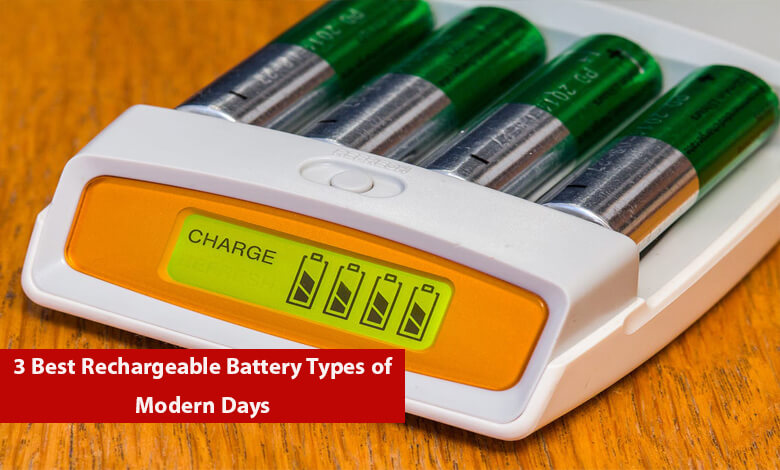
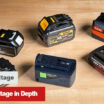
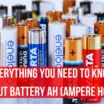
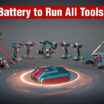

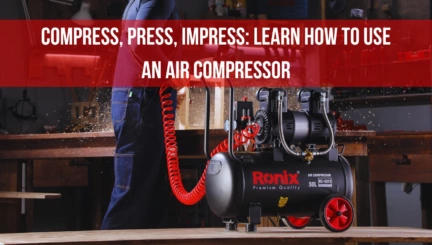
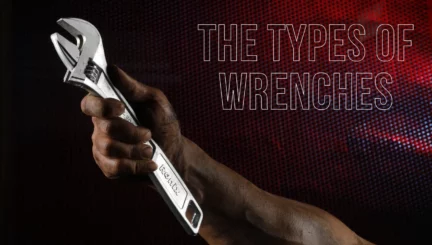
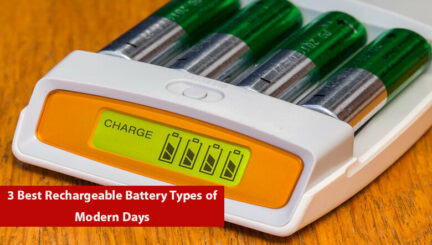
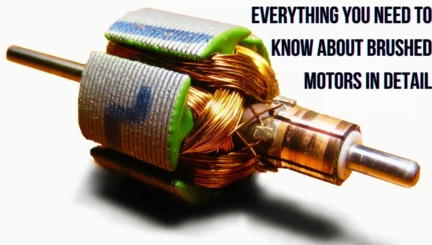
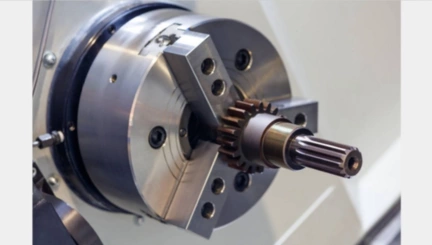
Thanks for sharing Relevant Information
Very helpful